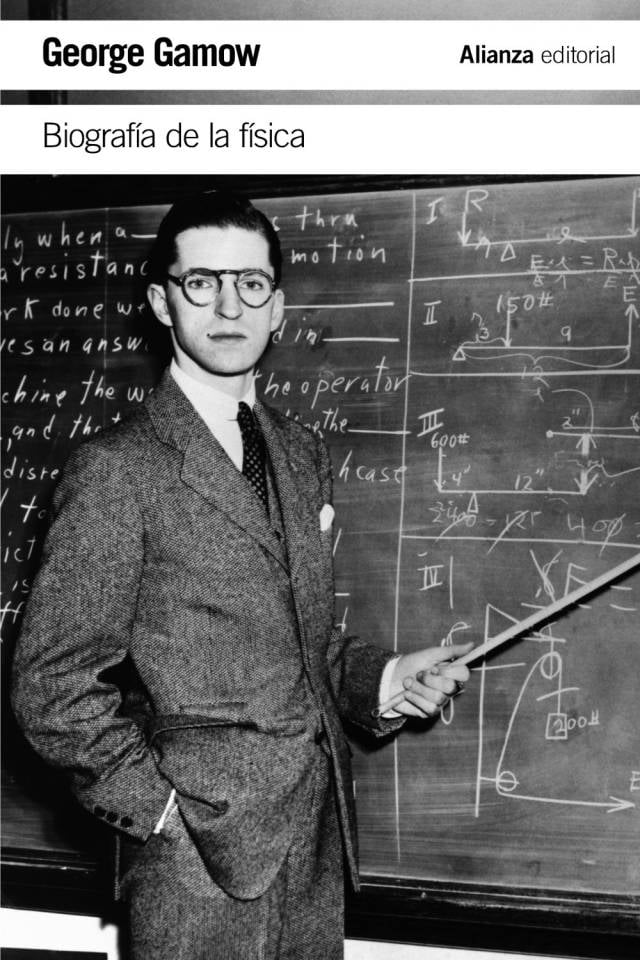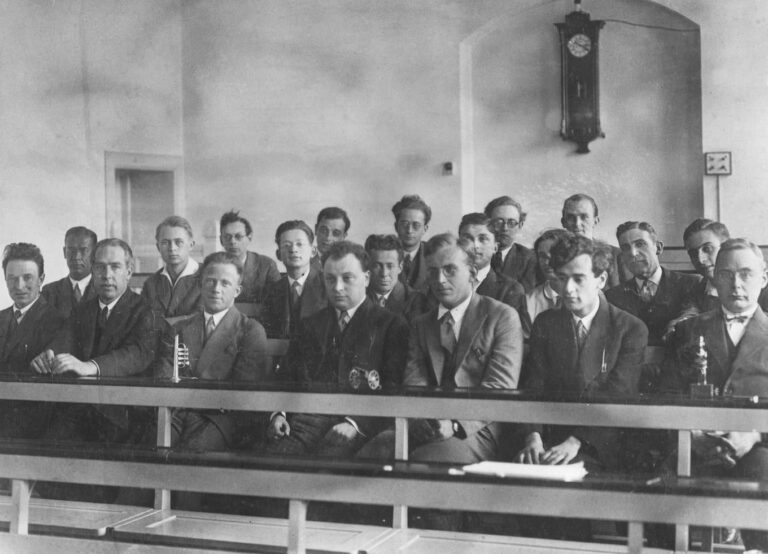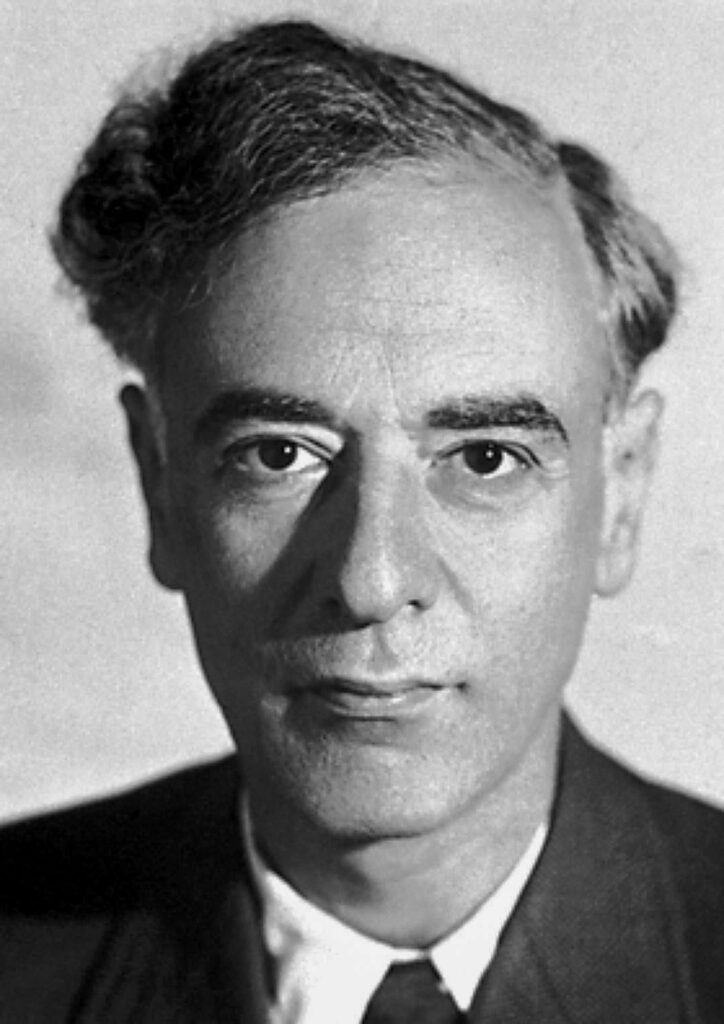Great scientists are not always given their due. History knows cases when a scientist has made at least three Nobel Prize-winning discoveries but never received the award. The lecture of Iryna Yegorchenko, PhD in Physics and Mathematics, scholar at the Institute of Mathematics of the National Academy of Sciences of Ukraine, “George Gamow: The Genetic Code” was dedicated to such a scientist. The event was supported by the Press, Education and Culture Section of the US Embassy in Ukraine as part of the ‘Urban Bridges: Science’ project. The project opens the forgotten and unknown ties between Ukraine and America through the prism of biographies and inventions of prominent scientists of Ukrainian origin.
… In the early 20th century, the popularity of physicists could be compared to the movie stars’ popularity. Albert Einstein’s theory of relativity was discussed in all the world’s universities; gravitational phenomena and the nature of space and time were debated. It was at this time, on March 4, 1904, that the future genius of physics Georgy Gamow was born in Odessa. The author of textbooks and the member of ‘Narodnaya Volya’ were among his forefathers, and his mother was from the family of Zaporozhye Cossacks.
…THE HABIT OF READING AND JOKING
Gamow will write about his childhood in the book “My world line. Informal biography”. He says that instead of tin soldiers, he was interested in other toys: microscopes and telescopes. By the way, the boy threw a set of soldiers under the bed after his mother read him books by Jules Verne and French astronomer Camille Flammarion.

The high school student read a lot (even exploding artillery shells could not recall him from the book on Euclidean geometry), and since he lived in Odessa, he liked to joke. Looking ahead, we will say that the habit of joking and humorously watching scientific events will remain with him for life. One such joke will almost cost him the fame of a scientific invention (Gamow will sign the article in the name of a fictional comedic character, and it will not be published).
The Gamow family (the boy was raised by his father) had a hard time living during the revolution, the civil war and the first years of the USSR. But his father understood the importance of education, and when Georgy decided to go to study in Petrograd, Anton Gamow sold the last valuables and bought a train ticket for his son.
It was worth going to the city on the Neva River, because many famous professors, for example, professor of mathematics, author of the first non-standard (extended) model of the Universe, Alexander Friedman taught at Petrograd University at that time. By the way, professor Friedman was the first to point out a mistake in Einstein’s theory and explain to students that the Universe is not static, it is expanding.
Student friends also contributed to the development of the young genius. The future stars of science studied with Georgy: Dmytro Ivanenko from Poltava, Matviy Bronstein from Vinnytsia, Lev Landau from Baku, and later, Lev Landau from Kharkiv.
– It was a confident and ambitious company, – Iryna Yegorchenko said. – There was a slogan in the USSR: “One person is nothing, the team is everything”. And young scientists said: “Not to be famous is ugly!”.
Indeed, they all became famous.
INTELLECTUAL “JAZZ GANG”
Young intellectuals called themselves “musketeers” and their group – “jazz gang”. The boys joked with each other and made fun of outdated teaching methods.
Then Viktor Ambartsumyan from Tbilisi joined the “gang”, and four wiseacres published a handwritten magazine “Leftovers of Physics” (later the publication grew into a solid magazine “Physicists are joking”).

Students managed not only to joke, study and publish the first papers, but also to work. “Scholarships were not paid then, it was necessary to earn living”, the lecturer continued. “Gamow was permanently looking for part-time work, in particular, he worked at the meteorological station of the State Forest University, the meteorological observatory of the Artillery School (it was necessary to make accurate calculations, take into account wind speed, etc.), the State Optical Institute. He even proposed a method for assessing the quality of glass, which was patented.
By the way, the members of the Jazz Gang studied stubbornly and persistently. One day they were so engrossed in scientific innovations in the library that did not notice how the flood started (the water in the Neva rose almost four meters above the norm).
It was no surprise that the talented student completed the entire university course in three years. After that, it was decided to send Georgy Gamow for an internship abroad, and in 1926 he went to the University of Göttingen (Germany). “In the early 1920s, USSR party activists understood that the science in the young country needed knowledge”, Ms. Yegorchenko continued. “They understood that it was important to communicate with foreign scientists, to work on equipment installed in European scientific institutions.”
Indeed, the leaders of the Soviet Union were increasingly interested in scientific research that promised to create new weapons in the future.
The scientist wrote in his “Informal Biography” that at the University of Göttingen lectures were given by “kings and crown princes of modern physics”: Albert Einstein, Niels Bohr, Max Planck, Marie Curie, Norbert Wiener. There were also scientists who a few years later became participants in the nuclear race: Werner Heisenberg and Robert Oppenheimer.
Summing up the results of his internship, Gamow wrote and published his first major work on the quantum nature of alpha decay. Later, based on the materials of this paper and the tunneling theory proposed by Gamow, his colleagues in the scientific community made dozens of discoveries. And received the Nobel Prize for it!
“WE DISTURB THE STRATOSPHERE! ATOMIC NUCLEI AND SPHERE!”
– The most outstanding physicists considered him an extremely promising scientist, – the lecturer said. – In 1928, the young scientist received a Carlsberg Fellowship from the Danish Royal Academy of Sciences and Arts. By the way, in order to receive such a scholarship (now we would say a grant), the recommendations of the best representatives of the scientific community were enough.
It so happened that Gamow on his way home from the internship (with ten dollars in his pocket!) met Nobel Prize winner Niels Bohr in Copenhagen. It was Bohr who recommended his colleagues from the Royal Academy to support the young colleague.
During his internship in Denmark, Georgy befriended the future “father of the hydrogen bomb” Edward Teller, and traveled with him around the country. Since then, there are many photos of a smiling scientist racing on a motorcycle, playing golf. And the main thing is that the Danish internship helped the scientist to develop a theory about atom’s nucleus decay, explain how electrons pass through the nucleus.
It was time to return to the USSR. Niels Bohr warned that this should not be done (repression had already begun in the country of the proletariat dictatorship), but Gamow returned.
The European successes of the young scientist did not go unnoticed, Pravda newspaper and other media wrote about the study of the atomic nucleus. Even the proletarian poet Demian Bedny devoted a dashing poetry to Gamow’s scholarly breakthrough. It said that the Soviet “guy” Gamow “reached the nucleus of a single atom. Zap! Zap! And now there are only fragments of the atom!”, and “science smells like the eve of October” as well.
The next internship in Europe was also arranged by Niels Bohr, and this time Georgy Gamow received a scholarship from the Rockefeller Foundation. In the USSR, this name has already acquired the connotation of swear words.
Over the years in Europe, the researcher has become accustomed to freedom, so for some time he did not notice that it is dangerous to be noticeable and freedom-loving (even in science!). Young intellectuals (former members of the “jazz gang”) strongly declared the futility of “old physics”, they demanded the foundation of a new institute of theoretical physics under their leadership, and so on. In early 1932, Gamow was elected a corresponding member of the USSR Academy of Sciences, however, he was not allowed to attend the Congress of Physicists in Rome…
By the way, it was Gamow who helped Ernest Rutherford perform the calculations of the required voltage for the lithium nucleus fission (the calculations were made using quantum mechanics). Rutherford created an experimental facility, and in May 1932 the nucleus was split. Certainly, the participants in the experiment received the Nobel Prize.
– The fission of the lithium nucleus took place a few months later at the Ukrainian Institute of Physics and Technology in Kharkiv, – the lecturer added.
– According to some reports, Georgy Gamow also joined the preparation of the experiment, about which Pavlo Tychyna wrote “We disturb the stratosphere! Atomic nucleus and sphere!” That is, our scientists were not the first to split the nucleus, but “stepped on the heels”!
At that time, the scientist was already wishing to leave the country.
While vacationing in the Crimea, the Gamovs tried to escape to Turkey in a kayak, but the current brought them back; on another occasion they tried to cross the border on skis (they wanted to get to Norway from the Kola Peninsula). With time, the scientist received an invitation to a congress in Brussels, and persuaded the Chairman of the Council of People’s Commissars of the USSR Molotov to permit him to leave the country together with his wife (under the personal commitment of French physicist Paul Langevin).
AT LIBERTY!
The couple did not return from Brussels, but later moved to the United States.
In the Soviet Union, a campaign to brand the fugitive immediately began. Gamow was called an unprincipled person seeking only his personal advantage, a scoundrel of world imperialism; he was dismissed from the position of a corresponding member of the USSR Academy of Sciences. Concerned about the “outflow of military inventions”, the party leaders also banned work abroad for Peter Kapitsa, who had his own (!) Laboratory at Cambridge University.
George Gamow (name ‘Georgy’ remained in the past) first worked in Washington, D.C., then moved to Colorado. The former resident of Odessa made many scientific discoveries, laid the foundations of astrophysics and cosmology. He built the first consistent theory of the evolution of stars with thermonuclear energy sources; together with Edward Teller proposed the theory of the red giants’ structure; developed a theory of chemical elements formation by successive neutron capture and a model of the “hot Universe” (the theory of the Big Bang).

In the early 1950s, when British scientist Francis Creek and American James Watson determined the DNA structure, Gamow also got involved into this work and proposed the concept of the genetic code. The hypothesis was later confirmed, and a group of American scientists received the Nobel Prize for sequencing the genetic code, which was suggested by Gamow.
That is, the scientist is the author of at least three hypotheses, whose developers became Nobel Prize winners.
Moreover, George Gamow wrote a lot of popular science books: “The Star Named the Sun”, “Quantum Mechanics”, “Gravity”, “Biography of Physics”, “Mr. Tompkins in Wonderland” (on the adventures of a bank clerk in the world of relativistic theory), “Biography of the Earth”, “Birth of the Universe”, “One, two, three… infinity” and others. Even today, they do not lie a long time in bookstores. It was for popularization of science that Gamow received the most prestigious UNESCO award, the Kalinga Prize.
An asteroid, a crater on the Moon and even a square in Odessa is named after George Gamow. But the greatest reward for the scientist, perhaps, was to know that, opening his books, boys and girls of today understand that the most difficult areas of science are interesting, fun and exciting.
Prepared by Svitlana GALATA
Svit newspaper, № 43 – 44, November 2021
